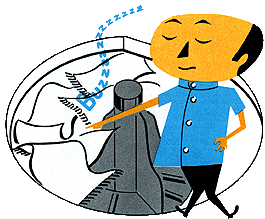|
Thread Number: 79188
/ Tag: Modern Dishwashers
Two motors vs one |
[Down to Last] |
Post# 1031101 4/28/2019 at 15:57 (1,916 days old) by chetlaham  (United States) (United States) |
||
|
| ||

|
Post# 1031111 , Reply# 2 4/28/2019 at 16:47 (1,916 days old) by chetlaham  (United States) (United States) |
||
|
| ||
Post# 1031146 , Reply# 3 4/28/2019 at 20:29 (1,916 days old) by combo52  (50 Year Repair Tech Beltsville,Md) (50 Year Repair Tech Beltsville,Md) |
||
One Motor Vs Two Or More Motors For One Appliance As mentioned above we had appliances earlier in the US and a motor used to be the most expensive part of most appliances so engineers needed to get the most use out of one motor if possible.
In a DW using a 1/3 HP motor for both washing and draining was cheaper to build at one time, but with advanced automated building of parts like motors in 3rd world countries it is cheaper to use multiple motors in most cases today.
The DWs that we produced in the US in the 60s through the 90s were actually more complex and and had greater engineering in them. If you look at the motor, dual pumps, and filtering systems in DWs like KA, WPs Power-Clean, MTs RR models and GEs multi-Orbit wash arm DWs with self-cleaning filters these DWs are generally complex than anything Europe ever had in large numbers at least.
DWs are still much less expensive and in a greater % of homes in the US than most of the western world.
John | ||
Post# 1031154 , Reply# 4 4/28/2019 at 20:58 (1,916 days old) by appnut  (TX) (TX) |
||
|
| ||
Post# 1031161 , Reply# 5 4/28/2019 at 22:32 (1,915 days old) by Launderess  (Quiet Please, There´s a Lady on Stage) (Quiet Please, There´s a Lady on Stage) |
||
Not just dishwashers | ||
Post# 1031167 , Reply# 6 4/28/2019 at 23:30 (1,915 days old) by foraloysius  (Leeuwarden, Friesland, the Netherlands) (Leeuwarden, Friesland, the Netherlands) |
||
@Launderess | ||
Post# 1031174 , Reply# 7 4/29/2019 at 01:54 (1,915 days old) by chetlaham  (United States) (United States) |
||
|
| ||
Post# 1031175 , Reply# 8 4/29/2019 at 02:26 (1,915 days old) by Launderess  (Quiet Please, There´s a Lady on Stage) (Quiet Please, There´s a Lady on Stage) |
||
All one knows is it is a "double motor" | ||
Post# 1031176 , Reply# 9 4/29/2019 at 03:19 (1,915 days old) by Launderess  (Quiet Please, There´s a Lady on Stage) (Quiet Please, There´s a Lady on Stage) |
||
@Louis | ||
Post# 1031181 , Reply# 10 4/29/2019 at 05:32 (1,915 days old) by foraloysius  (Leeuwarden, Friesland, the Netherlands) (Leeuwarden, Friesland, the Netherlands) |
||
 | ||
Post# 1031183 , Reply# 11 4/29/2019 at 05:53 (1,915 days old) by chetlaham  (United States) (United States) |
||
|
| ||
Post# 1031185 , Reply# 12 4/29/2019 at 06:40 (1,915 days old) by foraloysius  (Leeuwarden, Friesland, the Netherlands) (Leeuwarden, Friesland, the Netherlands) |
||

These motors were very common in European machines with higher spin speeds. My mother's 1966 Bosch had a similar motor.
View Full Size
| ||
Post# 1031251 , Reply# 13 4/29/2019 at 18:08 (1,915 days old) by Launderess  (Quiet Please, There´s a Lady on Stage) (Quiet Please, There´s a Lady on Stage) |
||
Interesting thing 
Is how that Youtuber experiments using a VFD to control that harvested Miele motor is pretty much standard these days for modern washing machines.
Price and size of various technology has come down, which when coupled with better designs allow today's fully computer controlled washing machines to be priced reasonably. My toplader AEG Lavamat for instance is entirely controlled off the motherboard. Pump, drum movements, spinning, etc.... My older Miele W1070 basically has only three speeds (tumbling, high and low spin) meaning it can only do so much in dealing with say OOB loads, excessive water/froth entering pump and so forth. OTOH the AEG Lavamat can slowly ramp up and down to speed (where the Miele just goes right into), and do all sorts of other fun things. Delicate cycle on the Miele involves simply tumbling one way, pausing, then other, pause, lather rinse and repeat. The AEG Lavamats have slow gentle but continuous movement. | ||

 Comes to the Rescue!
Comes to the Rescue!